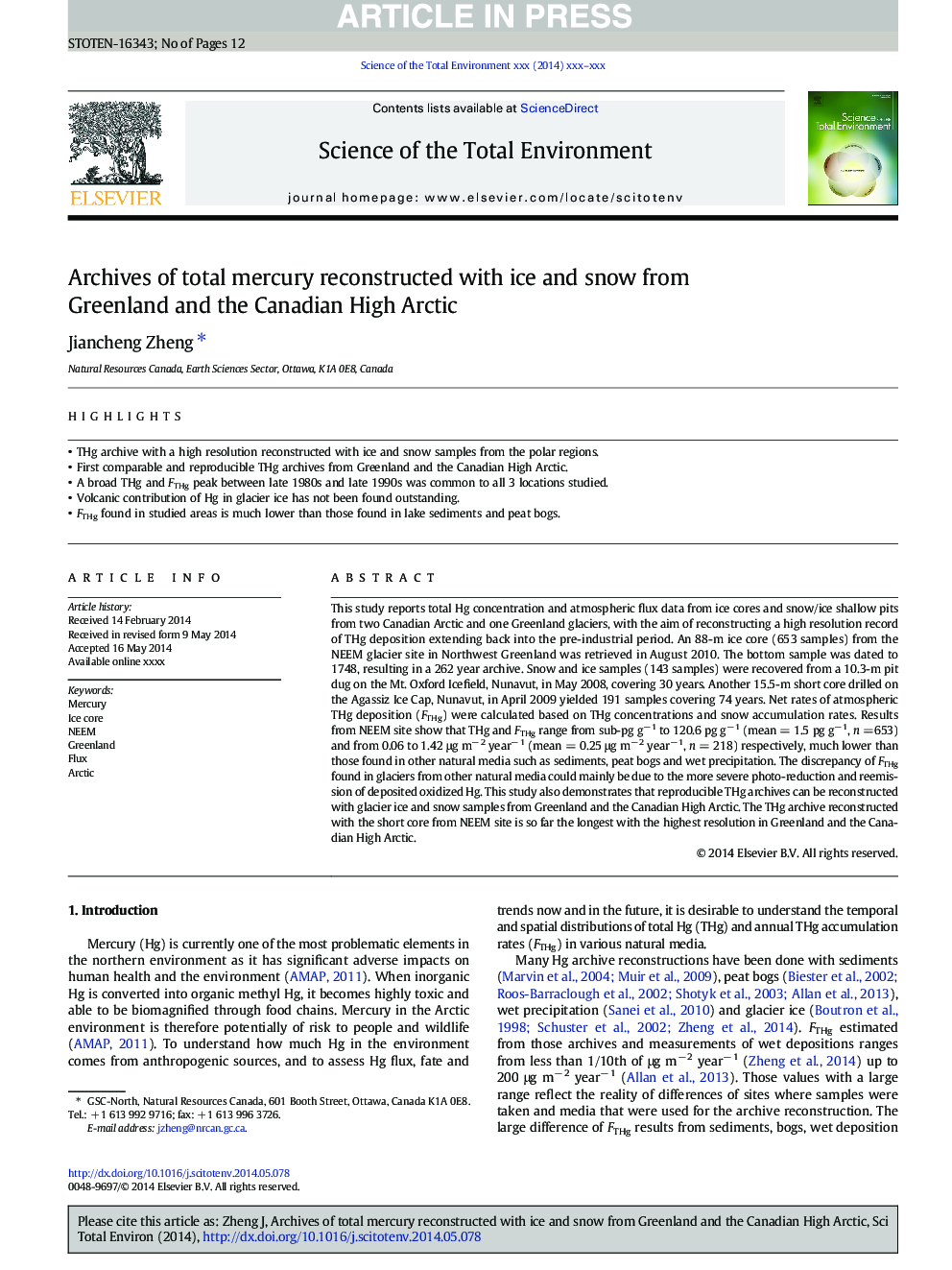| Article ID | Journal | Published Year | Pages | File Type |
|---|---|---|---|---|
| 6327356 | Science of The Total Environment | 2015 | 12 Pages |
Abstract
This study reports total Hg concentration and atmospheric flux data from ice cores and snow/ice shallow pits from two Canadian Arctic and one Greenland glaciers, with the aim of reconstructing a high resolution record of THg deposition extending back into the pre-industrial period. An 88-m ice core (653 samples) from the NEEM glacier site in Northwest Greenland was retrieved in August 2010. The bottom sample was dated to 1748, resulting in a 262 year archive. Snow and ice samples (143 samples) were recovered from a 10.3-m pit dug on the Mt. Oxford Icefield, Nunavut, in May 2008, covering 30 years. Another 15.5-m short core drilled on the Agassiz Ice Cap, Nunavut, in April 2009 yielded 191 samples covering 74 years. Net rates of atmospheric THg deposition (FTHg) were calculated based on THg concentrations and snow accumulation rates. Results from NEEM site show that THg and FTHg range from sub-pg gâ 1 to 120.6 pg gâ 1 (mean = 1.5 pg gâ 1, n = 653) and from 0.06 to 1.42 μg mâ 2 yearâ 1 (mean = 0.25 μg mâ 2 yearâ 1, n = 218) respectively, much lower than those found in other natural media such as sediments, peat bogs and wet precipitation. The discrepancy of FTHg found in glaciers from other natural media could mainly be due to the more severe photo-reduction and reemission of deposited oxidized Hg. This study also demonstrates that reproducible THg archives can be reconstructed with glacier ice and snow samples from Greenland and the Canadian High Arctic. The THg archive reconstructed with the short core from NEEM site is so far the longest with the highest resolution in Greenland and the Canadian High Arctic.
Related Topics
Life Sciences
Environmental Science
Environmental Chemistry
Authors
Jiancheng Zheng,
